Daming Lake (大明湖), located in Jinan City, is one of Jinan’s three major historical attractions, along with Baotu Spring and Thousand Buddha Mountain. It is formed by the convergence of over 20 springs, including Pearl Spring, Xiaogan Spring, Furong Spring, and Wangfu Pool, earning it the title of “China’s First Spring Water Lake.” The lake covers an area of 57.7 hectares with an average depth of 2 to 3 meters. Historically known as “Lishui Pi” in the Northern Wei dynasty’s “Water Classic Commentary” by Li Daoyuan, it was called Lotus Seed Lake during the Tang dynasty. The name “Daming Lake” was first recorded by Jin dynasty writer Yuan Haowen in his “Record of Jinan Travels.”
Visitors can explore Daming Lake on foot or opt for a boat ride, which offers a relaxing way to enjoy the scenery without missing any sights. For those who need a break, there are restaurants located at the north and south gates of the park, although prices are generally higher than outside the park. Visitors can also bring their own food or head to Furong Street outside the south gate, known for its affordable and delicious street food.
Throughout the year, Daming Lake hosts various flower and bonsai exhibitions, including the highly recommended Lotus Flower Exhibition, which typically runs from July 15 to August 31. This event showcases the lake’s stunning lotus blossoms and is a must-see for visitors.
Table of Contents
- Basic Information
- Location and Transportation
- Map of Daming Lake
- Highlights of Daming Lake
- Vlog about Daming Lake
- Other Attractions in Jinan Downtown
Basic Information
| Estimated Length of Tour | 2 hours |
| Ticket Price | Free |
| Opening Hours | 5.00 – 22.00 |
| Telephone Number | 0086-0531-86088925 0086-0531-86088900 |
Location and Transportation
Daming Lake is situated in the northern part of the old city area of Jinan, Shandong Province, China, specifically within the Lixia District. It features four main gates facing east, south, west, and north, each offering unique views and attractions to visitors. To get there:
East Gate: Take bus B36, K14, K30, K31, K41, K46, K54, or K83 and get off at Daming Lake East Gate Stop (大明湖东门站).
South Gate (the Main Gate): Take bus B98, K109, K11, K170, K41, or K95 and gte off at Daming Lake South Gate Stop (大明湖南门站).
Southwest Gate: Take bus 577, B98, K109, K11, K170, K41, K66, K91, or K95 and get off at Daming Lake Southwest Gate Stop (大明湖西南门站).
North Gate: Take Bus B53, BRT5, K119, K122, K30, K33, K41, K45, K6, or K83 and get off at Daming Lake North Gate Stop (大明湖北门站).
Map of Daming Lake

Highlights of Daming Lake
South Gate Archway (南门牌坊)

The South Gate of Daming Lake features a traditional Chinese archway, originally relocated from the Jinan Confucian Temple in 1952. The archway, initially made of wood, was rebuilt with a combination of concrete and wood in 1984 while retaining its original design. It is a magnificent structure with five compartments and a single eave, adorned with colorful decorations and ceramic animals. The roof is covered with yellow glazed tiles, and the eaves are supported by intricate brackets painted with motifs like “Rising Sun and Cranes,” “Golden Dragon Playing with a Pearl,” and “Western Lotus.”
Supported by twelve slanting columns and decorated with stone drums at the base, the entire structure exudes grandeur and is considered a symbol of Daming Lake. Next to the archway, a stone tablet from the 16th year of the Jiaqing reign (1811) features a poem about Daming Lake by Yu Shudian from Dengzhou (modern-day Penglai). The archway’s plaque inscriptions are modeled after the characters on this stone tablet. Symmetrical gatehouses on either side of the archway, covered with green glazed tiles, add to the charm. Stone bridges in front of these houses allow springs like Pearl Spring and Zhuoying Spring to flow into Daming Lake. Inside the archway, a dock shaded by willows serves as a mooring point for boats, enhancing the picturesque setting.
Tiegong Shrine (铁公祠)

Located on the northwest shore of Daming Lake, Tiegong Shrine is dedicated to Tie Xuan, a heroic figure from the Ming dynasty. The shrine, facing south, is a two-story building with five rooms on each floor. From the upper floor, visitors can enjoy panoramic views of the lush mountains and the serene lake. The courtyard features an octagonal pavilion with a high platform, adorned with intricate woodwork and colorful decorations. The pavilion, with its double-eaved roof and carved stone railings, offers a space for relaxation and contemplation, complete with stone tables and benches for games and sightseeing.
Tie Xuan, also known as Tie Dingshi, was the Minister of War and the Governor of Shandong during the Ming dynasty. In 1400, during the conflict between the Yongle Emperor (Zhu Di) and his nephew, the Jianwen Emperor (Zhu Yunwen), Tie Xuan fiercely defended Jinan against Zhu Di’s forces. Despite repeated attacks, Tie Xuan’s steadfast defense forced Zhu Di to bypass Jinan to capture Nanjing. After Zhu Di’s eventual victory and ascension to the throne, Tie Xuan was captured, refused to capitulate, and was executed. To honor his loyalty and bravery, a shrine was built in his memory.
Nan Feng Temple (南丰祠)
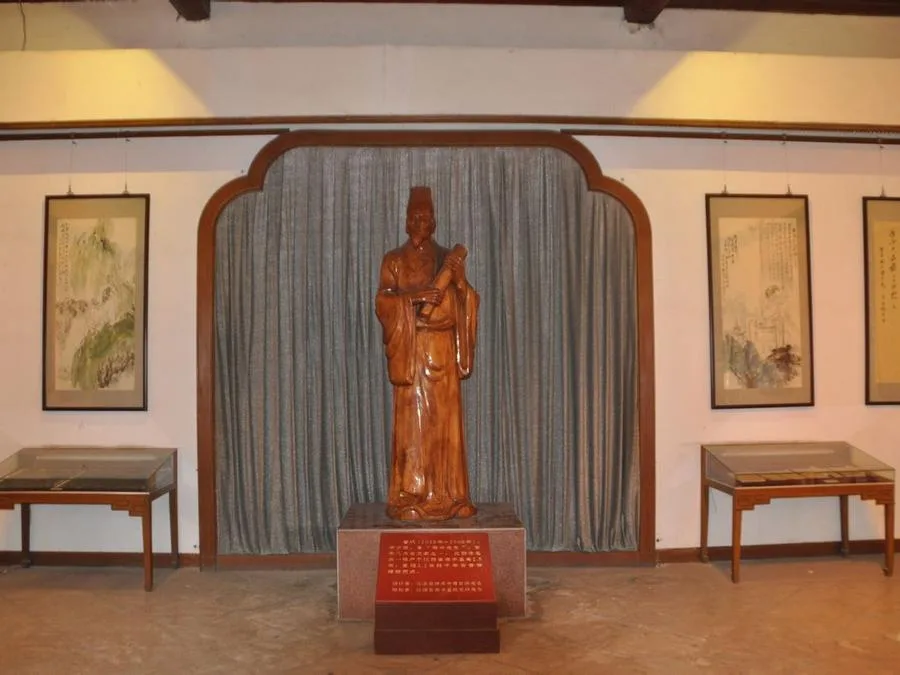
Nan Feng Temple, originally named Zeng Gong Temple, is located on the northeast shore of Daming Lake, north of Huibo Building. It was built in honor of Zeng Gong, a renowned writer of the Northern Song Dynasty. The exact date of its initial construction is unknown. It was rebuilt in the ninth year of the Daoguang reign (1829) by Tang Shipei, the magistrate of Licheng County, and initially consisted of just a three-room main hall. After the liberation, the temple, along with the nearby Yan Gong Temple and Zhang Gong Temple, was consolidated and renamed Nan Feng Temple. Today, the temple is a serene classical garden covering an area of 2,535 square meters, featuring the main hall, a theater hall, a waterside pavilion, and corridors.
Jiaxuan Temple (稼轩祠)
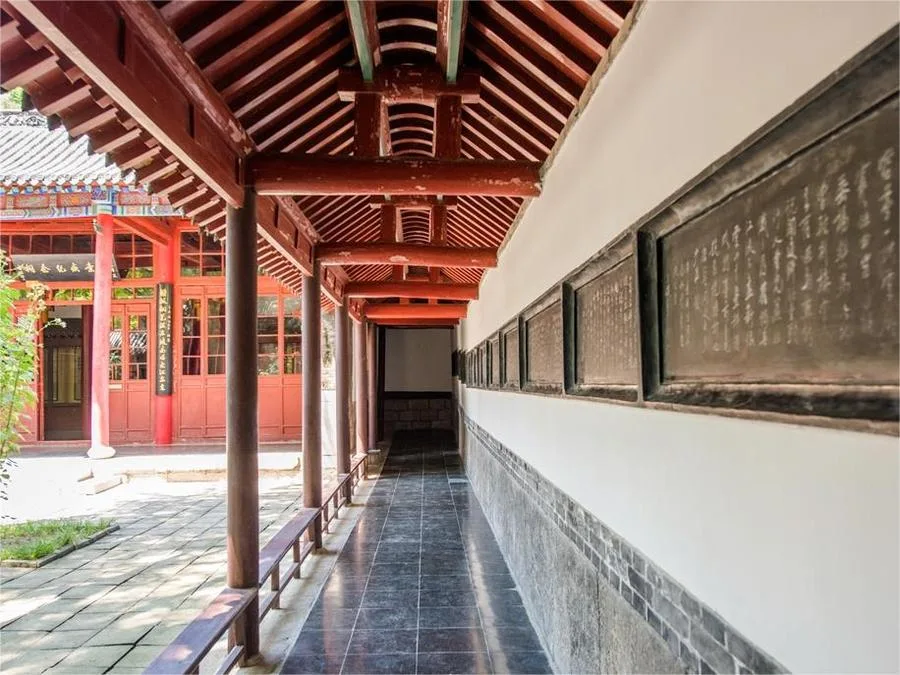
Jiaxuan Temple, located on the southern shore of Daming Lake, commemorates Xin Qiji, a patriotic hero and bold poet of the Southern Song Dynasty. The temple covers an area of 1,400 square meters and was converted from the Li Gong Temple (built in honor of Li Hongzhang) in 1961. The temple complex is designed in the style of an ancient government office, aligned on a north-south axis with three courtyards. The main gate features a plaque with the inscription “辛弃疾纪念祠 (Xin Qiji Memorial Temple),” written by contemporary Marshal Chen Yi. Flanking the gate are a pair of stone lions. Inside the gate stands a rockery made from Taihu stones, creating a picturesque scene.
Xin Qiji (1140-1207), also known by his courtesy name You’an and his pseudonym Jiaxuan, was a native of Licheng, Jinan. In his youth, he joined a peasant uprising led by Geng Jing against the Jin invaders. He later served as a local official in the Southern Song Dynasty, where he fervently advocated for resistance against the Jin. Despite his dedication, he was repeatedly demoted and eventually died in obscurity.
Beiji Pavilion (北极阁)

Beiji Pavilion, also known as Beiji Temple or Zhenwu Temple, is a Taoist temple located on the northeast shore of Daming Lake. The temple is dedicated to Zhenwu, a deity representing the northern sky and embodying the seven northern constellations. The temple was built in 1280 during the Yuan Dynasty and sits on a 7-meter-high stone and earth platform, covering an area of 1,078 square meters.
The central main hall faces south, with the Qisheng Hall behind it and a gate hall to the south. The gate hall has three bays, with bell and drum towers on either side. The complex also includes east and west side halls. The temple’s grand appearance is complemented by lush ginkgo trees and verdant cypress, giving it a rich, ancient atmosphere.
Inside the main hall, a statue of Zhenwu holding a sword is enshrined, flanked by statues of golden boy and jade girl attendants. Below the shrine stand four generals representing fire, water, turtle, and snake. The east wall features murals depicting the legend of Zhenwu Emperor on Wudang Mountain, while the west wall shows white tiger, Ma Tianjun, Wen Tianjun, celestial officials, rain master, and thunder mother. These vivid murals captivate visitors with their intricate storytelling.
Huiquan Hall (汇泉堂)

Huiquan Hall is situated on a small island in the southeast corner of Daming Lake. This island, known for its serene and picturesque scenery, is a popular summer retreat and is often referred to as “Cool Island.” Historically, many of the city’s springs converged near this island before flowing into Daming Lake. Thus the island’s main spring was named “Huibo Spring”, meaning the convergence of springs, and the temple was namde Huiquan Temple.
The exact founding date of Huiquan Temple is unknown, but it was rebuilt in 1800 by local salt merchants Mao and Zhang, as recorded by Wu Hua of the Qing Dynasty. The temple originally had two courtyards with several buildings, including the Buddha Hall, Guandi Temple, Gongshuzi Shrine, and Wenchang Pavilion. The Buddha Hall served as the main hall and housed Buddha statues, while the west side featured an elegant study named “Bi Li Hall.”
Today, Huiquan Hall remains a peaceful spot for visitors to relax and enjoy the cool breezes and tranquil waters of Daming Lake, preserving its historical charm and serene beauty.
Lixia Pavilion (历下亭)

Lixia Pavilion is situated on a small island in Daming Lake and derives its name from its southern proximity to Lishan (Thousand Buddha Mountain). This pavilion boasts a long and storied history, having been relocated several times over the centuries. Initially built during the Northern Wei Dynasty at the site of Wulong Pond, it was originally called the “Guest Pavilion,” serving as a reception area for officials and dignitaries. It was renamed Lixia Pavilion during the early Tang Dynasty.
In 745, during the Tang Dynasty, the renowned poet Du Fu visited his brother Du Ying in Linyi and passed through Jinan. At that time, Li Yong, the governor of Beihai, hosted a banquet for Du Fu and other Jinan scholars at this pavilion. Inspired by the event, Du Fu composed the poem “Accompanying Li Beihai at the Lixia Pavilion.”
Today, the pavilion stands prominently at the center of the island. It features an octagonal structure with double eaves, crowned with a pointed top. The pavilion’s red columns, blue tiles, intricate brackets, and decorative roof animals create a grand and picturesque scene. The open structure of the pavilion is adorned with a plaque inscribed with the characters “历下亭,” written by the Qianlong Emperor. Inside, stone-carved lotus tables and stools provide a serene resting place.
Moonlight Pavilion (月下亭)

Moonlight Pavilion is located on the north shore of Daming Lake, west of the Beiji Pavilion. Built in 1937, this charming pavilion stands at the center of a small pond. Its hexagonal structure features a pointed roof supported by white columns and decorated with colorful paintings, creating an elegant and delicate appearance. The pond around the pavilion is home to vibrant koi fish and majestic water lilies. The natural stone embankment and rugged rocks surrounding the pond add to its rustic beauty.
Moonlight Pavilion is an ideal spot for moon gazing. The pavilion’s southern view opens up to the expansive lake, offering a breathtaking scene when the moonlight reflects on the water. As night falls and the moon rises, the pavilion is bathed in soft, silvery light, with the lake shimmering gently. The combination of moonlight, the lake’s serene surface, and the pavilion’s architectural grace creates an enchanting and memorable experience for visitors.
Xia Garden (遐园)
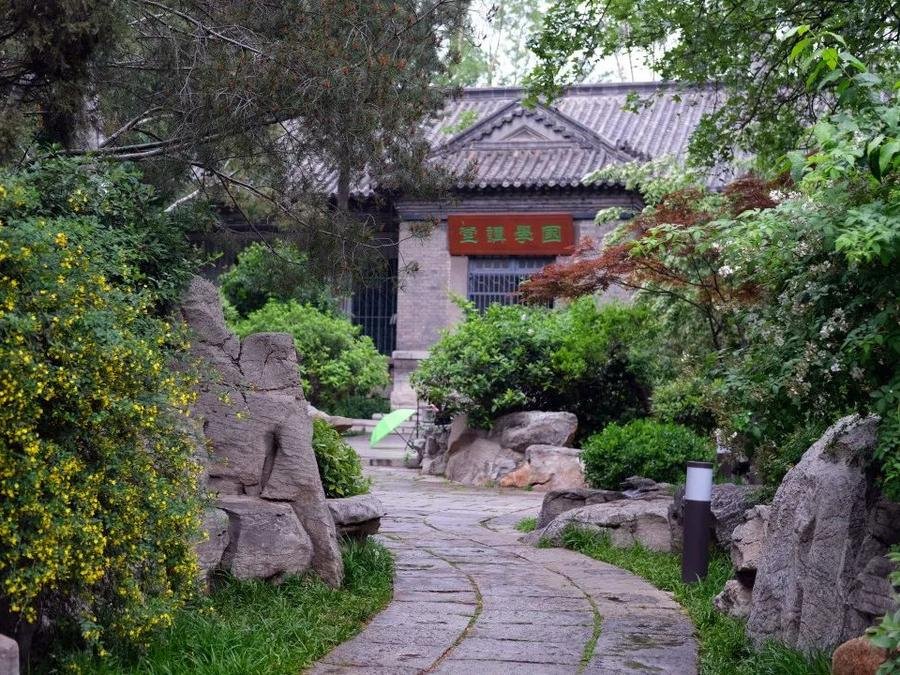
Xia Garden, located on the southern shore of Daming Lake, spans 9,600 square meters and is renowned as the premier classical garden in Jinan. It was established in 1909 during the first year of the Xuantong reign of the Qing Dynasty. The garden was the brainchild of Luo Zhengjun, the then Shandong Education Commissioner, who also founded the Shandong Provincial Library within its grounds. The site was chosen for its proximity to the former examination halls of the imperial civil service examinations, known as the Gongyuan, symbolizing a commitment to fostering education and nurturing talent. Xia Garden, designed in a traditional Chinese style, is a harmonious blend of a library and a garden, comparable to the famous Tianyi Pavilion in Ningbo. The main entrance faces east, and just north of the gate, a stone stele inscribed with the characters “遐园,” penned by Luo Zhengjun, welcomes visitors.
Qiuliu Garden (秋柳园)
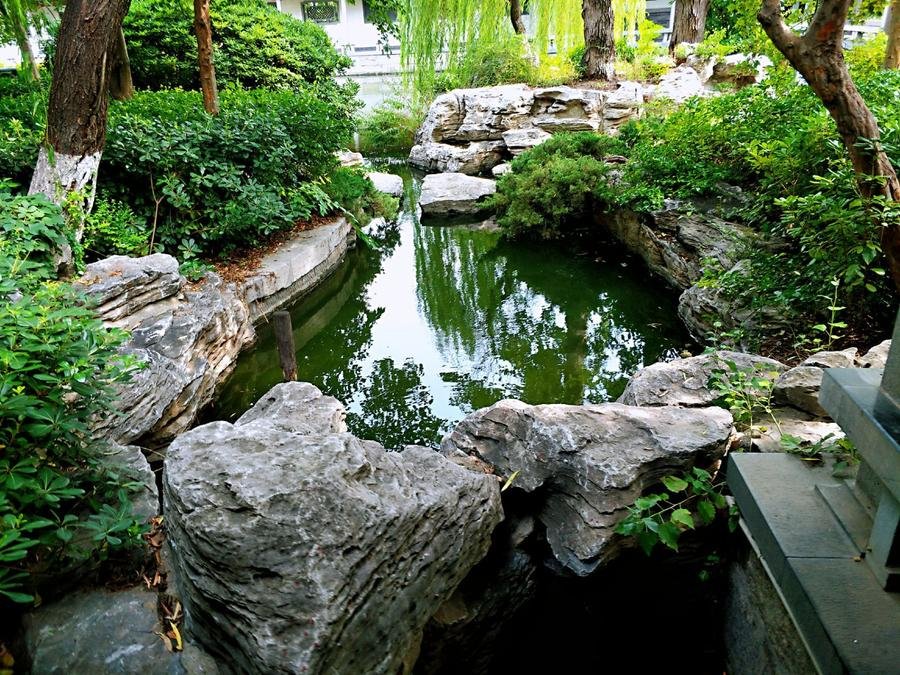
Qiuliu Garden, situated on the southeastern shore of Daming Lake, is historically significant as the reputed study retreat of Qing Dynasty poet Wang Shizhen. The garden takes its name from Wang’s celebrated poem “Qiuliu” (Autumn Willows). Wang Shizhen (1634-1711), also known by his courtesy name Yishang and literary name Yuanyang Shanren, was a prominent poet from Jinan, renowned for his extensive literary works, including the “Dai Jing Tang Ji” collection. In August 1657, Wang and several esteemed scholars gathered at the “Tianshui Surface Pavilion” on Daming Lake. Amidst the early autumn ambiance, with leaves just beginning to turn yellow, Wang was inspired to compose the “Qiuliu” poem. Although the original pavilion and study house no longer exist, the garden retains its picturesque charm, evoking the poetic sentiments of Wang’s era.
Chaoran Pavilion (超然楼)
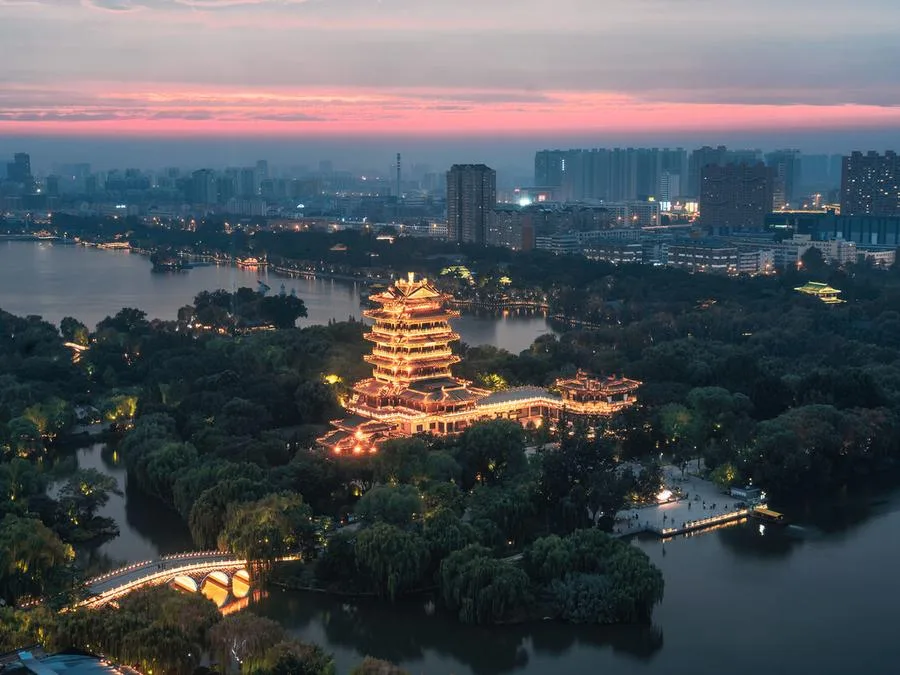
Chaoran Pavilion, perched beside Daming Lake, boasts a storied history dating back several centuries. Originally constructed during the Yuan Dynasty, this grand structure covers an area of 5,673 square meters. Resting on an expansive white marble base, the pavilion’s roof is clad in copper tiles, and it rises to a height of 51.7 meters, spanning seven levels. Its imposing architecture has earned it the title of “The First Pavilion North of the Yangtze River.” The restoration and reconstruction of Chaoran Pavilion in 2010 were integral to the broader expansion and renovation of Daming Lake. The pavilion serves as a showcase for Jinan’s rich cultural heritage, including its famous springs, urban garden traditions, and the historical culture of old Jinan.




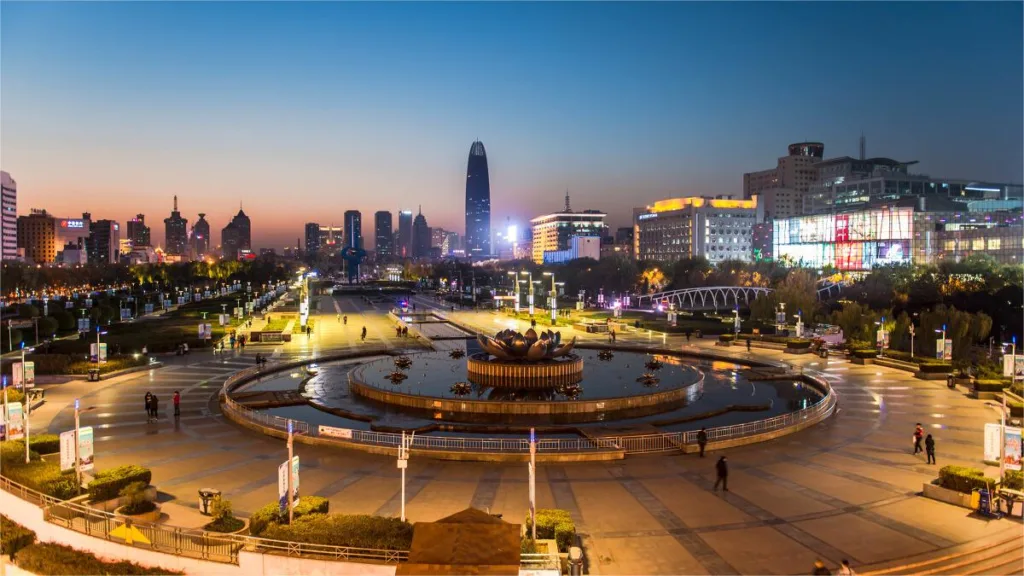
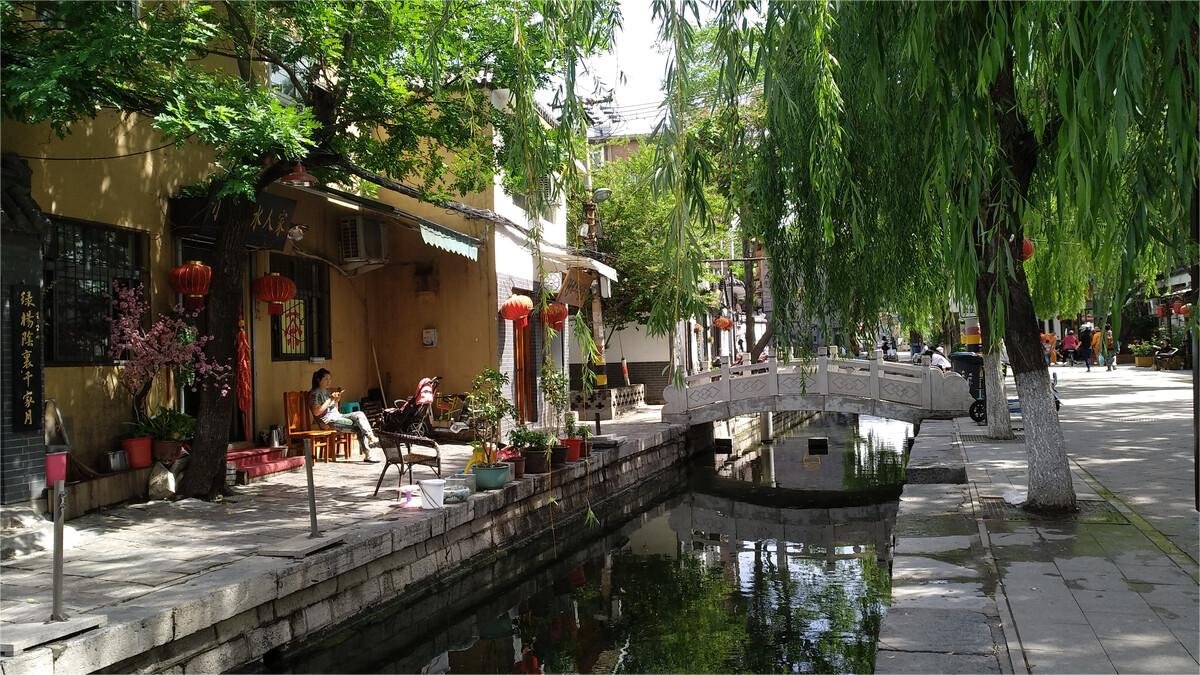



The Daming Lake Scenic Area has many entrances, so you can enter from any side. Whether you visit during the day or at night, each time offers its own unique beauty! Daming Lake has a history of over 1,500 years and is a natural spring-fed lake. The scenic area, which features some ancient buildings dating back to the Ming Dynasty, gives the impression that the water level is exceptionally high and full. At 7:15 PM, the Chaoran Pavilion (超然楼) lights… Read more »
What impressed me the most about Daming Lake wasn’t the scenery, but the bands by the roadside singing old songs together with the passing citizens.
Spring has arrived, and the weather is getting warmer. In the evenings, more and more people gather at Daming Lake, where the colorful lanterns are still lit up. It’s very beautiful.
It’s best to take the subway because it’s really crowded and there’s a lot of traffic! You can take Line 2 of the subway and get off at the D exit of Beiyuan, and then it’s about a ten-minute walk from there. If you don’t want to walk, you can take the colorful little cars that are parked by the roadside.
I went for a walk at Daming Lake over the weekend. There were many people around, and a lot of individuals dressed in traditional costumes for photography. After wandering for a while, I felt there wasn’t much of interest to see, and my photos didn’t turn out well. The whole place had a rather desolate atmosphere, lacking vitality. It truly seems that this season is not suitable for traveling here.
The winter at Daming Lake is truly picturesque at every step. The softly yellow willows and the reddish-brown water pines perfectly embody the essence of Chinese aesthetics in this moment!
I haven’t been to Daming Lake for a long time and noticed that the leaves have started to turn yellow, signaling the arrival of autumn. It should be even more beautiful in a few days. I also discovered that a new children’s playground has been built at Daming Lake, and the kids are really having a great time there!
The autumn at Daming Lake is so beautiful that it feels comforting.
In the evening, I went to enjoy the breeze at Daming Lake and noticed that people were queuing up to see the light show. The ticket prices were 40, 60, and 80 yuan. I thought it wasn’t too expensive, so I bought the 40 yuan ticket to watch it. However, it turned out to be just a fountain show with some stories about the city of springs interspersed. In some places, I couldn’t see anything clearly at all. It really… Read more »